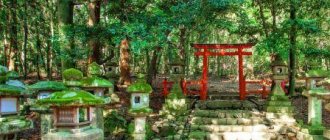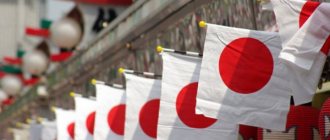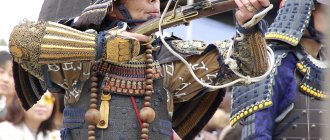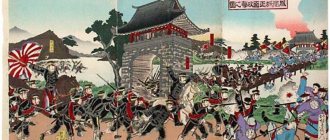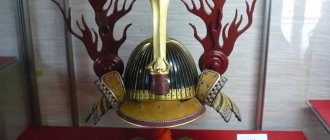General information
According to Wikipedia, Japan (in Japanese transcription Nihon Koku) is entirely located on the Pacific Islands and belongs to East Asia. Its closest neighbors are Russia, China, South Korea and North Korea. The population of Japan in 2015 is 126.91 million people, with an average annual decline of more than 200 thousand people per year. The map of Japan can be represented as a state located on 4 large islands: Honshu, Kyushu, Shikoku and Hokkaido, as well as many small islands. The capital of Japan is Tokyo with a population of more than 18 million people (including Yokohama). The largest cities in Japan: Osaka, Kyoto, Kobe, Kawasaki, Chiba, Nagoya. The monetary unit is the yen.
The state can safely be classified as a mono-national entity, since almost 99% of the population of Japan are Japanese. This condition largely determines the careful preservation of traditions and culture. Thus, the appearance of large cities acquired an ultra-modern look, but on the outskirts, almost everywhere, the national style is striking. Accordingly, the official language is one, Japanese.
Officially, Japan is considered a monarchy with constitutional limitations, even an empire. All issues of foreign and domestic policy are decided by the Prime Minister. The highest legislative power is concentrated in the bicameral parliament. The flag of Japan is a white cloth with a red circle in the center. This symbol of the sun seems to emphasize the rooted name - the Land of the Rising Sun. Time in Japan is the same on all islands and is 5 hours ahead of Moscow.
Year of Japan in Russia. Events in Russia. Part 1
2016 was a significant year for relations between Russia and Japan. In May 2021, Japanese Prime Minister Shinzo Abe met with Russian President V.V. Putin in Sochi, and in December 2021, the Russian President paid a return official visit to Japan. During the meetings, the heads of state agreed to hold cross years of Russia in Japan and Japan in Russia in 2021. 30 regions of Russia will be covered by numerous events designed to introduce the residents of our country to the rich history and unique culture, as well as modern trends in art, medicine and other spheres of life in the Land of the Rising Sun. It was planned to hold more than 400 events in Russia - exhibitions, festivals, concerts, conferences, seminars, tours of theaters and musical ensembles, film screenings, sports competitions and others. All events within the framework of the cross year receive support at the official level - the Embassy of Japan in Russia, the Consulate General of Japan in St. Petersburg, Vladivostok, Khabarovsk, Yuzhno-Sakhalinsk and other departments.
And although the sixth month of the cross year of Japan in Russia has already passed, the official proclamation took place quite recently, on May 26 at the Bolshoi Theater in Moscow. The ceremony was attended by representatives of culture, socio-political and business circles of the two countries, and it was opened by the President of Russia and the Prime Minister of Japan themselves. The world-famous ensemble of Japanese drummers “Drum Tao” came to the opening, specially preparing a special performance for this event. The ceremony program included not only playing traditional Japanese instruments, but also acrobatic and choreographic performances, a performance by the Budokan Center for Japanese Martial Arts, as well as a display of national Japanese clothing.
At the same time, for more than six months one can observe the fruits of joint cultural activities of the two countries. On the eve of the Year of Japan in Russia, on November 15, 2021, the exhibition “History of Russia in the 20th Century in Lacquer Miniature” opened at the All-Russian Museum of Decorative, Applied and Folk Arts in Moscow, which ran until January 21, 2021. The exhibition featured miniatures by Russian masters, made in a unique technique, which is a combination of icon painting traditions with the techniques of lacquer miniatures - traditionally Japanese art. On varnish, the masters depicted pages of Russian history from the events of the revolution to the collapse of the USSR (the establishment of Soviet power, the Great Patriotic War, the first flight into space, the Moscow Olympics), and therefore the combination of varnish techniques and modern subjects looks especially unusual.
On December 5, 2021, the same museum hosted a performance of the play “Male - Female Face,” choreographed by Morihiro Iwata, a Japanese ballet dancer at the Bolshoi Theater who currently heads the Buryat Opera and Ballet Theater in Ulan-Ude. Among the organizers of these events is the RANA Corporation (RHANA), whose area of specialization is anti-aging and aesthetic medicine. This corporation is interesting to us because it has been cooperating with Japan in the scientific and cultural fields for several years, and in the year of Japan in Russia it launched its own project “Culture to Live. Active Longevity”, within the framework of which it is planned to hold cultural and scientific events in Moscow, St. Petersburg, Sochi and Vladivostok. The events will be attended by ballet dancers of the Bolshoi and Mariinsky Theaters Ivan Vasiliev and Maria Vinogradova, theater director and producer Andris Liepa and Russian ballerina, theater and film actress Ilze Liepa, Soviet and Russian theater and film actress, singer Olga Kabo and other famous artists. An important component of the “Culture of Living” project is charity events, part of the funds from which will be sent to the Russian Life Line Foundation and the Japanese Red Cross to help seriously ill children. Thus, on February 28, 2021, at the Helikon-Opera theater in Moscow, a charity concert “Happiness to Live” was staged by Andris Liepa, uniting Russian and Japanese opera, ballet and pop stars on one stage. Famous artists also recited Japanese haiku and tanka poems.
January
From January 18 to March 25, first in Kazan, then in the Northern capital, the exhibition “Dolls of Japan” was held. Dolls have been made in Japan for more than thirteen centuries, and there are a huge variety of them, varying in shape, appearance and function. It is no coincidence that Japan is often called the “land of dolls.” Since ancient times, dolls for the Japanese are not just objects of art, but also attributes of religious rituals, so they are an important part of the daily life of the Japanese. The exhibition included porcelain, wooden, fabric, clay toys of various types - samples of dolls associated with the plots of the Noh, Kabuki and Bunraku theaters, dolls for girls Hina-ningyo (雛人形), dolls for boys Satsuki-ningyo (五月人形) and many others with their own unique characteristics and meaning.
From January 19 to 27, 2021, performances by the Japanese drummer ensemble “SAI” took place in several cities of the Far East (Vladivostok, Yuzhno-Sakhalinsk, Khabarovsk). In 2012, this group won the Japanese drumming competition in East Japan. The ensemble also took part in the filming of commercials for McDonald's and Google. Each performance of the group is an extraordinary spectacle, filled with tricks and dynamic drum rhythms.
We invite you to evaluate the team’s creativity and watch one of their performances:
From January to May, the State Museum of Oriental Art in Moscow, as well as the Moscow Zvezda and Fakel cinemas, hosted screenings of a number of famous Japanese films in Japanese with Russian subtitles: “Tora-san got into religion”, “The Diary of a Fisherman- Fool", "River of Fireflies", "A Worthless Man", "My Secret Treasures", "When You Live with Your Father", "The Cherry Orchard", "Healing", "Fine Snow", "Family Games", "Mount Tsurugi: A Chronicle trigopoints" and others, which anyone could attend.
February
On February 28, the exhibition “The Charm of Japan. Monuments of Japanese artistic culture of the 17th–20th centuries from the collection of the Historical Museum and the collection of A.G. Egorova". The exhibition showcases more than 100 unique examples of Japanese decorative and applied art of the 17th–20th centuries: visitors have a unique opportunity to see miniature netsuke (根付, keychains that Japanese women wore on a cord on the belt of a kimono), okimono (置き物, figurines for interior decoration), products from colored enamels, samurai weapons, tsuba (鍔, an analogue of the guard of Japanese bladed weapons), kimono (着物), geta (下駄) and other objects of art, many of which are presented for the first time. One of the “highlights” of the collection is the chest of the Governor-General of the Dutch East Indies, Cornelis van der Lein, made in the 17th century, the decoration of which represents scenes from classical Japanese literary works. Back in 1873, some exhibits were demonstrated at the World Exhibition in Vienna and delighted the sophisticated European public. The exhibition will last until September 4, don't miss the chance!
March
From March 1 to 18, the State Museum of Oriental Art in Moscow hosted another exhibition dedicated to Japanese dolls, “Doll Festival,” at which about 80 unique dolls were presented. Visitors also learned the history of the Japanese holiday Hinamatsuri, whose roots go back more than a thousand years.
In March, in Moscow, the Japanese company Mitsubishi Electric and famous Russian photographers organized a joint photo exhibition “Japan: Tradition and Modernity”, which presented more than 60 photos of the unique nature and urban landscapes of the country, in which centuries-old traditions and advanced technologies in various fields harmoniously coexist life of Japanese society - in culture and religion, in industry and fashion, and most importantly, in the daily life of the Japanese.
On March 20, the exhibition “Japan: the world in a drop of rain” opened in Kursk, which will last until November 20. The exhibition includes reproductions of paintings by Japanese artists, works by Japanese writers and poets, books on the history, philosophy and religion of Japan, as well as works by students of children's creative associations of the Palace of Pioneers and schoolchildren in Kursk, made using origami and ikebana techniques. The exhibition organizers hope that such a presentation of Japanese culture and art will encourage visitors to study the Japanese language, literature, cinematography, and music of the Land of the Rising Sun.
The exhibition “The World of Japanese Kokeshi Dolls” continued the series of exhibitions dedicated to Japanese dolls. It opened on March 21 in the city of Kungur, Perm Territory, at the local Museum of the History of Merchants. This exhibition is entirely dedicated to kokeshi - Japanese painted wooden dolls, which are characterized by a simple shape with a narrow body and a round head. Each doll is hand-painted and has the artist’s signature on the bottom.
On March 23, an Evening of Japanese Literature and Traditional Japanese Dance was held at the Gogol House in Moscow. Tomomi Orita, a Japanese actress of the Moscow Drama Theater "ApARTe", introduced the guests to the art of traditional Japanese dance, and the outstanding translator from Japanese Tatyana Lvovna Sokolova-Delyusina helped the guests plunge into the wonderful world of Japanese poetry. By the way, Tatyana Lvovna carried out the first complete translation of the novel by the Japanese poetess and writer of the turn of the 10th-11th centuries Murasaki Shikibu “The Tale of Genji” (源氏物語 \ Genji monogatari), as well as translations of classical and modern writers such as Izumi Shikibu, Matsuo Basho , Dazai Osamu, Serizawa Kojiro, Kaga Otohiko and others.
Another ensemble of drummers who visited Russia this year is the world-famous group Kodo, which first announced itself in 1981 at a local arts festival. Since then, the band has been performing all over the world with resounding success. Their performance in Russia, dedicated to the 35th anniversary of the ensemble, took place on March 29 and 31 in the central cities of the country - St. Petersburg and Moscow. The drummers presented the composition “Screw Evolution”, developed jointly with Kabuki theater artist, winner of the title “Living National Treasure of Japan” Tamasaburo Bando, which includes theatrical and dance elements. The performance in Russia was the first demonstration of this number abroad.
Check out the mesmerizing performance of this band:
In the following articles you will learn new details about the celebration of the Year of Japan in Russia. Share in the comments what events you have already attended, what you liked and remembered?
Also don’t forget to fill out the form below and get free lessons on hieroglyphs ↓
We recommend:
Formation of traditional and cultural values
Traditional Japanese values are a tribute to the historical development of the country. The foundations of cultural heritage should be sought in the period when ancestors who migrated from the mainland began to settle on the islands - the Jomon stage. The development of culture and the birth of a special Japanese identity were affected by long-term self-isolation from the other world - the so-called sakoku policy. It was only in the mid-19th century that real contacts between the Japanese and other nations began, when the Meiji stage began. Despite the long-term maintenance of its own identity, starting from the 60s of the last century, the influence of China, Europe and the USA began to be clearly visible.
The special Japanese mentality was undoubtedly affected by long-term isolation, geographical location and climate characteristics. Such powerful factors as frequent earthquakes, typhoons, hurricanes, and tsunamis could not but influence the formation of unique traditions and culture. The Japanese felt the need to revive inanimate nature, giving various phenomena living images. A distinctive feature of the Japanese has become the ability to sincerely admire moments of natural beauty. Traditional Japanese art grew out of these values.
Traditional Japanese values, which leave an imprint on all aspects of life, include asceticism, family rituals, decency, standards of decency, a sense of dignity, which to one degree or another was associated with religion, and therefore gave deep roots. These norms, sometimes taken to the point of absurdity, are generally supported to this day. For the Japanese, strict subordination, reminiscent to a certain extent of admiration, is quite normal. Society is characterized by the unification of people according to social principles, with the creation of special relationships within the group, and weak contacts between groups. The Japanese have a special attitude towards understanding debt and obligations (a special category is giri).
The catastrophic tsunami in Japan in 2011 particularly clearly revealed the features of society. Japanese traditions are largely determined by the influence of such destructive factors. And the new test proved that people have retained the baggage that gives rise to patriotism, hard work, and high dedication.
The influence of culture on Japanese fashion in modern times of the 20th century
Of course, the culture and art of the 20th century around the world, as well as Japan, left their mark on fashion, which has retained its trends to this day. With the advent of anime, the Japanese, and subsequently residents of other countries, began to imitate the heroes, dressing up as cartoon characters and copying their gestures, behavior, and statements.
In some areas of Japan you can meet young people who identify themselves as belonging to a certain subculture. For example, supporters of the Gothic movement constantly dress in black outfits, lace frills, and leather gloves. Fans of RnB and hip-hop often visit solariums to give their skin an unnatural shade of tan, which is not typical for the Japanese, and also dye their hair white.
But girls and guys who prefer the “fruits” style choose bright outfits for themselves, and dress them in several layers and accompany them with colorful accessories.
<Japanese dolls Cats of Happiness from Japan>
Features of language and literature
The Japanese language has been an important component of culture for many centuries. The concept of hieroglyphs itself is very difficult to write. They are based on 3 types of characters: Chinese kanji, as well as the syllabic alphabet katakana (angular type) and hiragana (rounded type). Ancient Chinese characters became the root basis, but by adding Japanese syllables, a special reading of hieroglyphs appeared, which made it possible to form a special classical Japanese language, which gave impetus to the active development of specific Japanese literature. Writing hieroglyphs has long been considered a real art. To simplify translation for foreigners, a special transcription in Latin script has been developed - Romaji. For Russian-speaking people, the Polivanov system has been created for presenting hieroglyphs in the form of Cyrillic.
Taking into account the nationality of the first settlers, the influence of Chinese culture was clearly visible during the birth of Japanese literature. The first truly national, original literary creations date back to the 7th - 8th centuries, when the Kojiki tales and the Nihongi historical chronicles appeared. During this same period, poetic works were created. They became the basis for the gradual development of such styles as waka, tanka and haiku, which even today have admirers around the world. The works of the great Basho in the haiku style have been translated into almost all major languages of the world. The world's literary treasury includes the works of such masters as Abe, Kobo, Akutagawa, Kenzaburo, Haruki, Ryu, Kobayashi Issa.
Reflection of national art in the culture of the 20th century
Enriched with new knowledge, Japanese culture allowed cinema to move to a new level. At first, the Japanese began to produce films that were somewhat reminiscent of ordinary theaters, but after a while the acting style was reformed towards realism. And every Japanese film still reflects the essence of the country, which demonstrates simplicity, contemplation and laconicism.
By the way, in the middle of the 20th century, there were already six large film companies in Japan, and around the same time, the creation of gorgeous films by the world famous Akira Kurosawa began.
Also, the art of Japan has been enriched with a new genre - anime, which has gained worldwide popularity. At first, there was imitation of their Western colleagues, including Disney, but then the Japanese decided to enlarge the eyes of the characters in order to give their heroes distinctive features.
Japanese literature has made a real revolution in the minds of readers, captivating them with drama and frankness, as well as combining reality and mythology. And, perhaps, we should name the names of the writers who became the founders of such art in Japan - Yukio Mishima and Kenzaburo Oe.
Of course, we cannot forget about the musical side of Japan. At the beginning of the century, shakuhachi and shamisen instruments were especially popular, but they soon faded into the background. After all, Japanese hearts were conquered by synthesizers and electric guitars, which later were able to gain worldwide recognition.
Features of religious influence
Religion played a key role in the development of all aspects of the island society, incl. formation of traditional and cultural values. Religion in Japan has two branches: Buddhism and Shintoism. The basis of Shintoism is the deification of natural phenomena, which gave rise to the Japanese attitude towards inanimate nature as living beings. She also teaches people to live in harmony with nature. It is Shinto that sufficiently personifies the nation and its culture.
Buddhism appeared in Japan much later than Shintoism, and therefore had less influence on the formation of culture. Perhaps he leaves the greatest mark in traditional architecture. In general, both of these religions are quite intertwined, and now it is difficult to isolate them in their pure form.
Festival of Traditional and Contemporary Culture of Japan
Nizhny Novgorod
The festival of traditional and modern culture of Japan will be held from May 11 to 16 at the Nizhny Novgorod State Linguistic University named after N. A. Dobrolyubov.
On May 12 and 13, master classes on traditional dance will be held at the NGLU (registration in the Japanese Center group is required).
On May 14 at 14.00 in the large assembly hall of the NSLU there will be a gala concert at which masters and students of the Toshu-ryu dance school will perform. You can confirm your participation by email ( [email protected] ) or in the Japanese group.
On the evening of May 15 (approximately at 19.30) a fire show from the group Genso-Unrave will take place at the Nizhny Novgorod Fair.
Features of the development of fine arts
Like the entire culture, the visual arts of Japan developed in their own way, acquiring sophistication and originality. Japanese painting is an ancient and incomparable way of self-expression of the nation. It cannot be confused with any artistic movement existing in the world.
In paintings, nature comes to the fore as the divine basis for the existence of everything. One of the first trends in the history of painting was the illustration of literature - horizontal scrolls in the Yamato-e style. A little later, the sumi-e style appears in the form of single-color watercolors. Starting from the 17th century, wooden engravings (ukie-e) showing geishas, scenes of the Kabuki theater, and nature gained popularity. These unique Japanese styles had a significant influence on the development of world painting.
Japanese arts and crafts have a special charm. Traditional dolls have received particular international recognition. The fame of such applied arts as netsuke, origami, ikebana, bonsai, temari, woven painting, and tea ceramics spread far beyond the borders of Japan.
Japanese sculpture developed in the form of perfecting figures made of baked clay. Ceramic idol figurines (dogu) are considered one of the most ancient forms of national art. A significant place is occupied by sculptural figures of animals, birds and people made of ceramics.
With the arrival of Buddhism on the islands, statues of Buddha appeared in sculptural creativity. Wood began to be actively used as a material, followed by varnishing and gilding. Bronze was used much less frequently.
List of used literature
[Electronic resource]//URL: https://litfac.ru/referat/kultura-yaponii-posle-vtoroy-mirovoy-voynyi/
Examples of similar educational works
Development of printed engraving in the 20s of the 20th century
... artists for the most part did not limit themselves to any one type of engraving, but tried their hand at related fields ... - in 1464. The impetus for the development of engraving as an independent art form was, as we know, the development of sciences, culture, ...
Russian rock movement in criticism of the 80s of the twentieth century
...what is rock and how did it appear? He writes that there are several opinions on this matter. According to one of them, rock is “simply English and American folk music.” Otherwise,...
Cultural life in the USSR in the 20s of the XX century
... training with production; Continuity in upbringing and education; Cooperative learning. 2.2. Transformations. School. The first step towards... in Moscow in October 1920. Over the years, the leading role in the association was played by L. Averbakh, F.V. ...
Poems and poems of the 40s - early 50s of the XX century
... characterized by a desire for a philosophical and historical understanding of reality. Poets do not limit themselves to expressing patriotic feelings, but... Y. Smelyakova. The poet glorifies the glorious history of Russia in the poem “The Spinner”, where he creates an allegorical, ...
Science, education, culture in Kazakhstan in the 20-30s of the 20th century
... approaches to the development of science and management of scientific and technological progress in accordance with the objectives of the formation of Kazakhstan as a sovereign state. The issues of forming an independent scientific and technical policy and the country’s science management system were the basis of the Law...
Features of theatrical creativity
Japanese traditional theater is the country's calling card. One of the first directions of theatrical art is considered to be the “no” theater, where artists came out to perform in masks and chic costumes. In the 17th century, the most famous version of stage creativity appeared - kabuki theater. Only men played in such a theater, and an impressive layer of makeup was applied to their faces. Men also played female roles (onnagata). At the same time, another famous theatrical direction developed - the banraku theater (with puppets).
One cannot ignore a special originality - Japanese animation “anime”, which was originally aimed at adults. In such films, national comics – manga – were most often processed.
